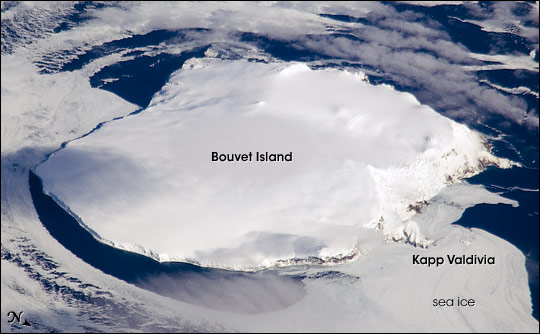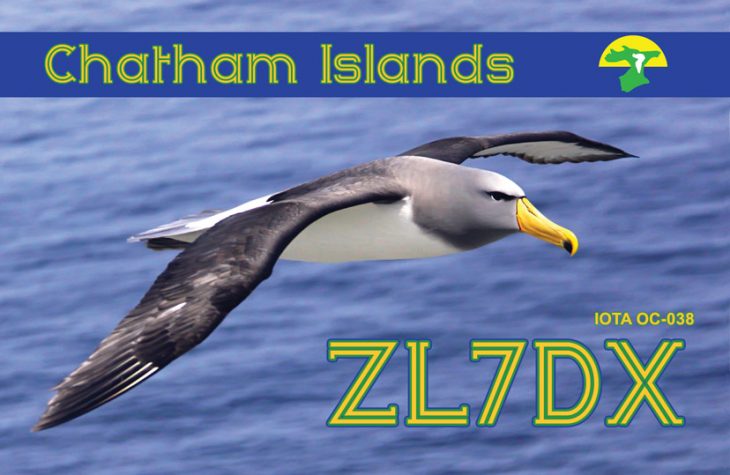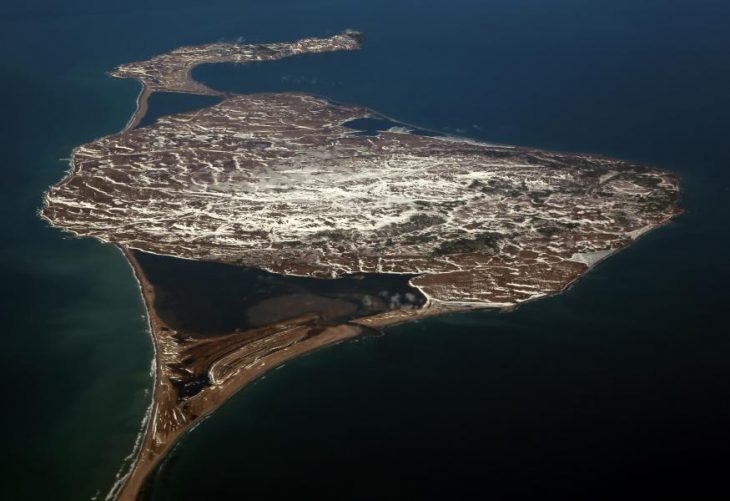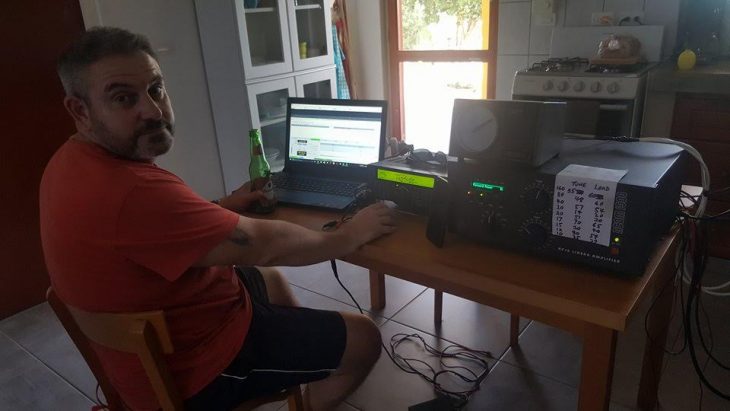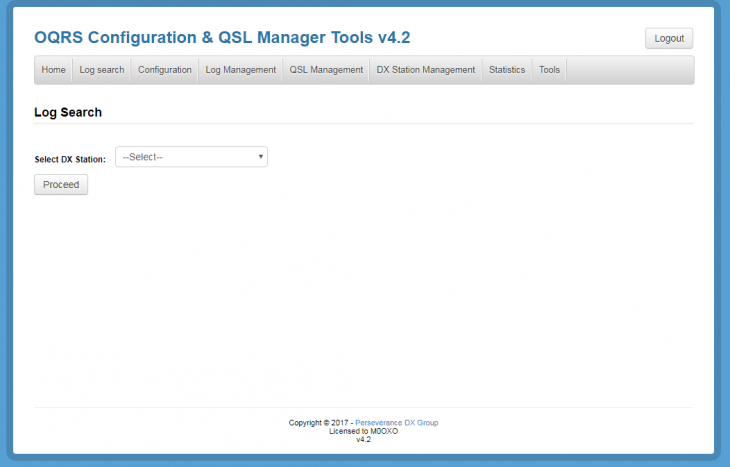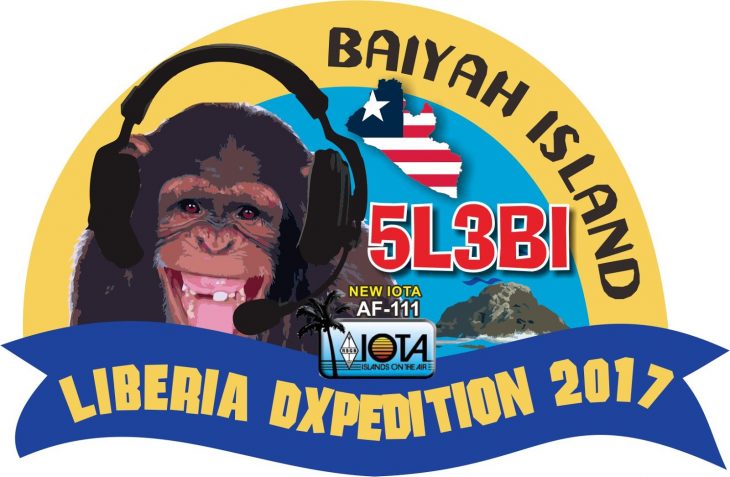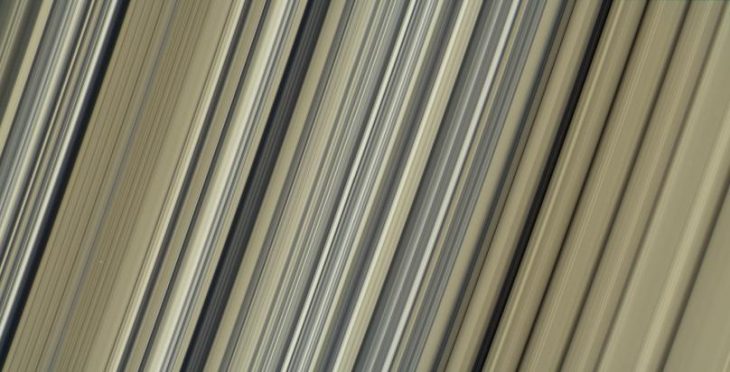September 21, 2017
Our team meeting in Atlanta, GA from Sept. 7th through the 10th was a great success. Eighteen of our 20 operators were present, coming from as far away as Japan and representing 7 of the 8 home countries of our team members.
Our meetings began with a review of our goals, the challenges we have met, and those we have yet to encounter. We had a Skype conference with the CEO of our transportation company in Punta Arenas, Chile, and then discussed safety, our shelter deployment plans, antennas, transceivers and amplifiers, propagation, medical and emergency issues, operating practices, scheduling, and propagation.
We spent many hours unpacking and then staging our equipment. We inventoried everything and then began moving it from temporary storage to our 40-foot sea container. We also prepared our customs documentation which included the 6,000 items on our inventory. We ran a tank of gas through each of our eight 6.5 KW generators, drained the oil from them, and readied them for shipment. There were many of trips to local stores for more shipping cases, duct tape, nuts and bolts, electrical supplies, fuel cans, etc.
Our EME team needed to be certain there were no problems with their complex station and antenna system. They worked until 4:30 AMassembling their 2-meter station and antenna array and were rewarded by completing a QSO off the moon with PA2CHR, our EME pilot station. The station works!
Our sea container leaves Atlanta the first few days of October. It will be placed aboard a ship bound for Punta Arenas, Chile. We are hopeful that it will there no later than December 1st. Our team members have all purchased their airline tickets to Punta Arenas for a couple days of meetings and orientation. Then we will fly across the Drake Passage on the morning of January 13th to board our ship at King George Island in the South Shetland Islands. We plan to sail for Bouvet that same afternoon. We will arrive at Bouvet sometime between January 23rd and 25th. Our actual landing date is weather dependent. We will be lucky to be on the air within a few days.
Every detail of our landing sequence, shelter construction, antenna layout, equipment setup and radio operations is well thought out. Also, our emergency evacuation routes and plans have been identified.
We are humbled by the support of the DX community. Over 100 clubs and foundations and over 1550 individuals have supported us financially. If you have already supported us, we thank you. But, please ask your fellow DXers to join you. If you have yet to contribute, we ask for your consideration. While our operators are prepared to dig deeper into their pockets to make this DXpedition happen, your continued support would make our faces, as well as our antennas…beam.
Counting the days,
73,
Bob-K4UEE
Ralph-KØIR
Erling-LA6VM
Category - Blog
Chris ZL2DX/ZL7DX is now living the Chatham Islands (IOTA OC-038).
ZL7DX, Chris, says he and ZL2QT, Catherine, do not yet have their longer term accommodations and are still in a studio apartment size place with no room for radio yet. He is working on it and hopes the wait for a better QTH will not be too much longer. The space limitation also has unpacking the shipping containers with the gear in them on hold.
Chris and Catherine had hoped to be on the air back in May. They plan to be there for three years and operate on HF and 6 EME.
Chris has had several Callsigns and is a veteran of several DXpeditions namely ZL4TAK & ZL4OY New Zealand, ZL4OY/A Campbell Island, ZL4OY/C & ZL7OY Chatham Island, ZM8OY and ZL8OY Raoul Island in the Kermadecs. Also operated at ZM2K and ZL8RI.
QSL for ZL2DX & ZL7DX (no other callsigns) via M0OXO OQRS or Direct Post Mail
Radio Amateurs members of Cambridge University Wireless Society will be active from Saint Pierre and Miquelon Islands, IOTA NA – 032, 13 – 23 September 2017 as FP/M0WUT, FP/M0BLF, FP/DK2AB, FP/G3ZAY, FP/DH5FS, FP/G7VJR.
They will operate on HF Bands all modes.
QSL info:
FP/M0WUT via M0WUT.
FP/M0BLF via M0BLF.
FP/DK2AB via DK2AB.
FP/G3ZAY via G3ZAY.
FP/DH5FS via DH5FS.
FP/G7VJR via M0OXO.
DXCC Country – Saint Pierre and Miquelon FP.
Hi all just a quick update from the beautiful island of Bonaire SA006
The first few days have been mainly for familiarising ourselves with the area with a few hours of radio in the morning and evening. Our unofficial host Steve PJ4DX and wife Eva are living right next door to us and have been fantastic, picked us up from the airport, taken us out for food plus Steve has been most generous in lending me his antennas and Acom 1500 Amp. If it was not for his generosity I would not have been on air so soon.
Saturday the 16th
Started using my PJ4/MW0JZE for the first time on FT8. I admit this mode is very new to me plus I am not usually a big data op but FT8 has sparked an interest so I took the opportunity to be very first FT8 statin to operate from PJ4. With FT8 being such a new mode there seems to be many different opinions of how to end a QSO or even begin a QSO. There is no hard or fast rule I guess but RRR is fine for me, the station returns 73 and I continue with CQ PJ4/MW0JZE. What is the need to send another 73 from me???
20m is an absolute zoo, I have been getting 13 to 15 spots on my window and any one time, this is crazy and no matter how I try to work a station it sometimes takes me 5 or 6 attempts so I have set a limit of 4 replies, if in this time you fail (sorry) then I will scrub your call and continue to call CQ once more.
Sunday the 17th
Nice opening to EU our morning time, worked quite a lot of friends (always nice to work your friends when in another DXCC) Again 20m was a zoo, gave up after a few hours. Steve and I discussed where to place the Hexbeam, there is not a lot of room for antennas here as Steve has used up all the space with his antennas hi hi A site was agreed on and cleared with Steve’s landlord so we began to assemble the portable Hexbeam. Due to circumstances beyond our control I am not able to get the hex as high or in the clear as possible, while will not affect my operating it will effect an experiment I was hoping to carry out which was a A/B test between the Spider Beam Vs the Hexbeam unless both antennas are same height and both in the clear then it will not be a fair comparison.
Monday the 18th
Gave up on 20m so tried 15m, what a breeze, not so many stations so able to work stations with ease, most of them after one over so the Q rate has been a little higher. Best statins worked so far on this band VK9VKL 😉
I will be trying 17 tomorrow and maybe some of the higher bands, keep checking the cluster guys!!
More updates later in the trip… 73 de Ant PJ4/MW0JZE
Qsl via M0OXO OQRS or Direct Post Mail
Perseverance DX Group (PDXG.net) September, 2017
PDXG QSL Management Platform Update
Earlier this year we released a report on the status of our PDXG QSL Management Platform that was developed to automate the QSL manager’s backend processes. Developed over the past 3 years it’s now at Version 4.3 and installed on servers in the United Kingdom and the USA. Exclusive users are Charles M0OXO, Tim M0URX, Pista HA5AO and Gene K5GS.
The development goal was to eliminate, or greatly reduce, the manager’s manual tasks. The first large implementation was the 2015 TX3X Chesterfield Island DX-pedition, we learned a lot about what QSL managers and users expect from an OQRS platform. We’re happy to report the following 2017 year to date metrics:
– QSOs loaded: 5,018,167
– Total number of DX logs: 800 (DX-pedition, contest, active DX stations handled by M0OXO, M0URX and HA5AO)
The application eliminated much of the manual drudgery of processing confirmations for a single DX operator to the largest DX-pedition.
A QSL manager with one helper can process OQRS requests for the largest DX-pedition in one day, an amazing 75% reduction in time. Compare this to the old process that took multiple people many days to handle a large DX-pedition.
Today the only time consuming OQRS confirmation tasks are stuffing envelopes and affixing labels, a bulk mail franking machine eliminated postage stamps. Other automated tasks include matching donors to the log for special attention and busted call handling, no more busted/missing call e-mails.
One recently added feature prevents sending duplicate QSL cards to the same DXer. Many DXers request a card through OQRS or Direct and then send a card via the buro, the software will not respond to the buro request if a card was previously sent.
With all this extra time on their hands M0OXO & M0URX are available to handle additional DX call signs and DX-peditions.
The time has come to tell you of the launch of the new IOTA website www.iota-world.org and the software system that in future will run the IOTA Programme. The Big Day will be 14 September. In preparation to moving IOTA to its new website we are disabling user logins on the RSGB IOTA website at 0800 UTC on 12 September 2017.
When the new website is online you will be redirected there automatically and you will be able to log in with the same credentials as you use now on the current IOTA website. You can choose your language by selecting one of the flags then. We hope that you enjoy getting to know the new website and all that it has to offer. Our help point is at [email protected].
Calling Software Developers
Software developers should be aware that the move to the new website may affect any application using data from www.rsgbiota.org since this website will shortly be taken offline. Please contact us at [email protected] if your software uses data from www.rsgbiota.org and you want to have access to this kind of data in the future.
Reporting Programme Growth
In July we celebrated the first anniversary of the introduction of crediting QSO matches with logs on Club Log. Introduced on the existing software, it has already been hugely successful in increasing the volume of credits given by 70%, providing evidence that it meets the wishes of a significant part of the IOTA community for this kind of development.
Needless to say, it has boosted the financial viability of the programme. Currently some 54% of all credits given so far in 2017 were for QSO matches, a figure that we believe will increase once participants get used to the new software. Paper cards submitted are down 20% suggesting replacement with electronic confirmations which from a very low figure for IOTA Contest matches has spiralled from 4,036 to 32,878 credits. This is just the beginning.
G3KMA, 12 September 2017
***14th September 0730 We are aware of the problem some of you are experiencing when attempting to Log in. We hope to have it fixed asap. Please qrx…..
The wet season is in full force in Liberia this year. This makes any road travel tricky and potentially dangerous which in-turn has so far prevented Richmond EL2BG and Dickson EL2DT from making a 2nd recce trip to Baiyah island. The images shown depict current road conditions on the only road south to the small village opposite Baiyah island.
Since we believe roads conditions may never fully recover between now and the end of October, we have recently managed to (thankfully) reserve seats on a MAF (Mission Aviation Fellowship International) flight which will take most of the team directly to Greenville Sinoe airstrip. From there we will meet Richmond EL2BG who will have made the treacherous road journey south in his 4×4 vehicle. We cross fingers he makes the trip!
We are in constant contact with the local villagers and elders who still remember our project and are eagerly awaiting our arrival. We look forward very much to meeting them, too.
With the new and additional cost of flights to/from Sinoe region from Monrovia we do still seek generous donations from the IOTA and DX community. We are truly indebted to those generous donors and organisations who have supported 5L3BI thus far – it’s much appreciated. Considering a donation? Please visit here: https://af111new.com/support/
In less than 2 months the activation of this brand new IOTA will have taken place. The excitement is rising!
It’s likely a final news release will be issued prior to departure.
Vy 73 from 5L3BI team.
PS: EI5GM, EI9FBB and MM0NDX have been issued with the Liberian callsigns EL2GM, EL2BB and EL2EL. It’s their plan to use these calls after the 5L3BI activity from the LRAA (Liberia Radio Amateur Association) in Monrovia, probably on November 3rd. However, if due to bad weather / sea conditions we cannot land on the island, then we will revert to using these calls during late October / early November from mainland Liberia.
Qsl via M0OXO OQRS or Direct Post Mail
Grant VK5GR has written a blog post now on the E6AG website that describes tips for working him from Niue starting in a few days. Hopefully this will help explain what I will be up to. Any questions, comments or feedback most welcome.
””The new digital mode FT8 created by the WSJT-X development team has taken the amateur world by storm. Officially only released in July, the characteristics of this mode are still being studied by the global amateur radio community. The 15 second cycle time and 90 second QSO time while decoding signals down to -20dB in the 3kHz AWGN channel make it very attractive for DXPeditioning as even under difficult band conditions, contacts can be maintained at roughly 20-30 an hour (a far cry from the 10-15 on JT65). While not as good as RTTY (where 60/hour is possible) in terms of QSO rate, its weak signal performance make it a serious contender………..
….Read more on this link…. http://e6ag.net/?page_id=246
September 09, 2017 @ 0030 UTC
Report of Solar-Geophysical Activity
Solar activity was at high levels. Region 2673 (S09W70,
Dkc/beta-gamma-delta) continued to be the primary source of solar
activity. The region produced four M-Class flares (R1-R2 Minor-Moderate)
during the reporting period of which the strongest was an M8/2b observed
at 08/0749 UTC. The magnetic complexity remained significant as the
region rotated towards the solar limb.
Region 2677 (N17W02, Axx/alpha) and Region 2679 (N15W41, Bxo/beta) were
in a decaying trend. Only minor changes were observed in Region 2674
(N13W54, Fko/beta) and Region 2678 (N11E05, Cro/beta). No Earth-directed
CMEs were observed in available coronagraph imagery.
.Forecast…
Solar activity is expected to be at moderate to high levels (R1-R2
Minor-Moderate) over the next two days (09-10 Sep), with a chance for
very high (R2-R3 Moderate-Strong) levels, due to the flare potential and
recent history of Region 2673. Flare potential will begin decreasing
over day three (11 Sep) as the region rotates off of the visible disk.
September 8, 2017 @ 13:10 UTC
A coronal mass ejection (CME) propelled into space by an X9.3 solar flare on Thursday reached our planet a little earlier than expected and helped to generate a Severe (G4) level geomagnetic storm. The solar wind climbed to above 700 km/s and the Bz component of the interplanetary magnetic field (IMF) pointed sharply south (-32nT) following the shock passage. Visual aurora is being reported across many locations at middle to high latitudes. Attached photo below is courtesy of Kathy Laroche from Williamstown, Ontario, Canada. Excellent photo and thanks for sharing!
A geomagnetic storm warning will remain in place for the next 24 hours. Sky watchers should continue to be alert for visual aurora.
UPDATE @ 13:10 UTC: The Bz component of the interplanetary magnetic field (IMF) has again tipped south. The solar wind also remains above 700 km/s and this is helping to fuel an ongoing geomagnetic storm. A Severe (G4) storm is again in progress.
September 7, 2017 @ 17:30 UTC
Strong Flaring Continues
The flaring around region 2673 continues on Thursday. The very active region produced an M7.3 flare at 10:15 UTC and this was followed up by an X1.3 event at 14:26 UTC. So far neither flare looks to have produced a large coronal mass ejection. Another strong flare will be very possible during the next 24 hours. With each passing hour, region 2673 rotates closer towards the west limb and the chances for an Earth directed eruption will decrease because of this. More updates whenever necessary.
September 6, 2017 @ 23:55 UTC
CME Impact / Storm Warning (UPDATED)
Impact! The coronal mass ejection (CME) observed on Monday swept past Earth at approximately 23:48 UTC Wednesday evening. Minor (G1) to Strong (G3) geomagnetic storming is in the forecast for middle to high latitudes during the next 24 hours. The timing works well for sky watchers across Scandinavia, northern Europe, Canada, Alaska and the northern tier USA. More updates whenever necessary.
UPDATE @ 06:30 UTC: So far the first CME impact is not nearly as impressive as initially forecast. G3 level storming from this passage is not looking likely, at least not at this point.
The Bz component of the interplanetary magnetic field (IMF) is now finally starting to point south at times and this could help the chances for a geomagnetic storm A storm warning will remain in effect on Thursday.
A reminder that another CME observed on Wednesday is expected to reach Earth by Friday and will again deliver a chance for Strong (G3) geomagnetic storming.
September 6, 2017 @ 21:00 UTC
Coronal Mass Ejection (CME) UPDATE
Coronagraph imagery courtesy of LASCO C2/C3 is now available. A bright, fast moving halo coronal mass ejection (CME) is seen leaving the sun following the X9.3 event earlier today and does indeed have an Earth directed component. Because of the sunspots location now off center in the southwest quadrant, the bulk of the plasma cloud is traveling to the west. The Earth directed flank is still significant enough to almost make a geomagnetic storm a certainty by Friday. Sky watchers should be alert for visible aurora during the next several nights while we await another CME generated by an M5.5 flare on Sept. 4th. Stay tuned to SolarHam.com for the most up to date information.
These are the highest-resolution color images of any part of Saturn’s rings, to date, showing a portion of the inner-central part of the planet’s B Ring. The view is a mosaic of two images that show a region that lies between 61,300 and 65,600 miles (98,600 and 105,500 kilometers) from Saturn’s center.
This image is a natural color composite, created using images taken with red, green and blue spectral filters. The pale tan color is generally not perceptible with the naked eye in telescope views, especially given that Saturn has a similar hue.
The material responsible for bestowing this color on the rings—which are mostly water ice and would otherwise appear white—is a matter of intense debate among ring scientists that will hopefully be settled by new in-situ observations before the end of Cassini’s mission.
The different ringlets seen here are part of what is called the “irregular structure” of the B ring. Cassini radio occultations of the rings have shown that these features have extremely sharp boundaries on even smaller scales (radially, or along the direction outward from Saturn) than the camera can resolve here. Closer to Saturn, the irregular structures become fuzzier and more rounded, less opaque, and their color contrast diminishes.
The narrow ringlets in the middle of this scene are each about 25 miles (40 kilometers) wide, and the broader bands at right are about 200 to 300 miles (300 to 500 kilometers) across. It remains unclear exactly what causes the variable brightness of these ringlets and bands—the basic brightness of the ring particles themselves, shadowing on their surfaces, their absolute abundance, and how densely the particles are packed, may all play a role.

